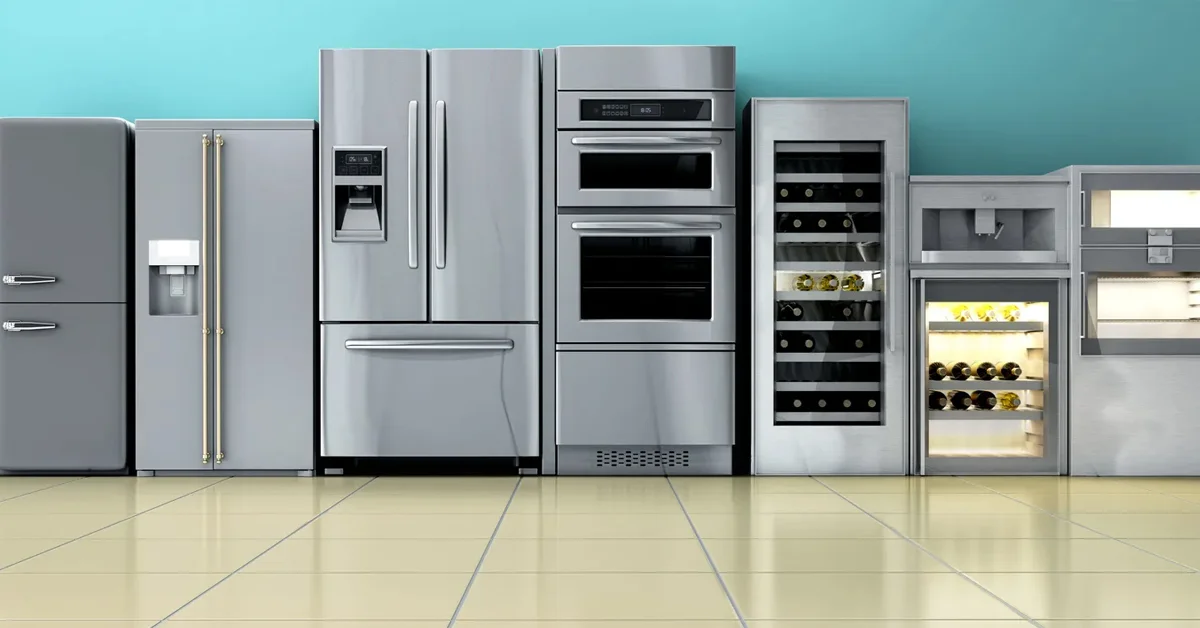How to Choose the Perfect Refrigerator
How to Choose the Perfect Refrigerator
Introduction
Choosing the perfect refrigerator can feel overwhelming, right? With so many styles, features, and brands out there, it’s easy to get lost in the options. But here’s the thing—your refrigerator is not just another kitchen appliance. It’s the heart of your kitchen, the keeper of fresh food, and often the centerpiece of your home. From storing daily essentials to preserving leftovers, it plays a huge role in your everyday routine. That’s why getting it right matters a lot.
The good news? Finding the right refrigerator doesn’t have to be complicated. Once you know what to look for—size, design, features, and budget—you can easily narrow down your choices. Think of it as matching your lifestyle with the perfect fridge. Whether you’re a big family that needs extra freezer space, a cooking enthusiast who wants advanced cooling technology, or someone who values sleek style, there’s a refrigerator designed just for you.
Why Choosing the Right Refrigerator Matters
A refrigerator isn’t something you replace every year—it’s a long-term investment that often lasts for a decade or more. Choosing the wrong one can quickly turn into a daily frustration. Imagine struggling with limited space, awkward shelving, or poor cooling that spoils your groceries. On top of that, an inefficient model can consume more electricity, leading to higher energy bills month after month.
On the other hand, the right refrigerator can make life much easier. It keeps your food fresher for longer, helps you stay organized, and ensures your kitchen runs smoothly. A good refrigerator also adds value to your home, both in style and functionality. Plus, modern energy-efficient models don’t just cut down your bills—they also reduce your environmental footprint.
In short, choosing wisely means investing in comfort, convenience, and long-term savings.
Types of Refrigerators
When it comes to buying a refrigerator, one size definitely does not fit all. Each type has its own unique design, advantages, and best use cases. Here’s a breakdown of the most popular refrigerator styles to help you decide which one fits your needs:
Top Freezer Refrigerators
This is the classic refrigerator design most of us grew up with. With the freezer compartment located at the top and the fridge section below, these models are both affordable and practical. They are highly reliable, consume less energy compared to larger models, and provide good storage for everyday use.
-
Best for: Small families, couples, or those on a budget.
Bottom Freezer Refrigerators
As the name suggests, these models place the freezer at the bottom, keeping the fresh food section at eye level. This design makes it easier to access fruits, vegetables, and drinks without bending down.
-
Best for: People who prioritize fresh food over frozen items.
Side-by-Side Refrigerators
These refrigerators are split vertically into two sections—freezer on one side, fridge on the other. With their slim double doors, they’re a great fit for kitchens with limited space for door swing. Many models also feature water and ice dispensers.
-
Best for: Families who need equal storage space for fresh and frozen foods.
French Door Refrigerators
French door refrigerators combine the benefits of side-by-side doors on the top with a pull-out freezer drawer at the bottom. They’re known for being stylish, spacious, and feature-rich, often including advanced options like temperature control zones, adjustable shelves, and smart technology.
-
Best for: Large households or anyone who wants a modern, premium refrigerator.
Mini and Compact Refrigerators
Compact refrigerators are designed for small spaces like dorm rooms, offices, or studio apartments. While they can’t store as much as full-size models, they’re perfect for beverages, snacks, and essential groceries.
-
Best for: Students, office workers, or people living in small apartments.
Smart Refrigerators
Smart refrigerators are the future of cooling. Equipped with Wi-Fi connectivity, touchscreens, apps, and even AI features, they can help you track food, suggest recipes, and allow you to adjust settings remotely from your smartphone. Some even let you peek inside via cameras without opening the door.
-
Best for: Tech-savvy households that want convenience, luxury, and cutting-edge features.
Key Factors to Consider Before Buying a Refrigerator
Buying a refrigerator is more than just picking a kitchen appliance—it’s a long-term investment that directly impacts your comfort, lifestyle, and even electricity bills. With so many models, features, and brands available, knowing what to look for can save you from making costly mistakes. Below, we’ll walk through the key factors and features you should consider before choosing the best refrigerator for your home.
Size and Dimensions
Before falling in love with a sleek design, always measure your kitchen space carefully. Don’t just check the height and width—you also need to consider door swing, ventilation space, and clearance for easy movement. If you have a modular kitchen or small apartment, choosing the right fit becomes even more critical.
Storage Capacity
Your family size and eating habits determine the ideal refrigerator capacity:
-
Singles or couples: 150–250 liters
-
Small families (2–3 members): 250–350 liters
-
Medium families (3–4 members): 350–450 liters
-
Large families (5+ members): 500 liters or more
If you shop in bulk or freeze large amounts of food, opt for bigger storage.
Energy Efficiency
Since refrigerators run 24/7, energy efficiency is crucial. Look for the energy star rating—a 5-star refrigerator may cost more initially but saves you money in the long run through lower electricity bills.
Inverter vs Non-Inverter Technology
-
Inverter refrigerators adjust compressor speed based on cooling needs. This makes them quieter, more energy-efficient, and longer-lasting.
-
Non-inverter refrigerators are cheaper upfront but less efficient and slightly noisier۔
Noise Levels
If your refrigerator is placed near your living room or open kitchen, noise can be a major issue. Always check product specifications or reviews for low-noise refrigerator models.
-
Keywords: silent refrigerator, quiet fridge, low-noise refrigerator.
Design and Aesthetics
A refrigerator isn’t just functional—it’s also a kitchen centerpiece. Options include stainless steel, matte finishes, glass doors, and colorful patterns. Choose a design that blends seamlessly with your kitchen’s theme.
Important Features to Look For
Modern refrigerators come packed with features. While not all may be necessary, the right ones can make your life easier.
Adjustable Shelves and Drawers
Flexibility is essential. Being able to move shelves or drawers lets you store tall bottles, large dishes, or party platters with ease.
Frost-Free Technology
No one enjoys manually defrosting ice. Frost-free refrigerators circulate air evenly, preventing ice buildup and keeping food fresher.
Water and Ice Dispenser
Once considered a luxury, built-in water and ice dispensers are now common in premium refrigerators. They add convenience for families who enjoy chilled drinks.
Temperature Control & Multi-Zone Cooling
Different foods need different temperatures. Multi-zone cooling systems ensure fruits, vegetables, dairy, and meat all stay fresh longer.
Convertible Compartments
Need more fridge space for a party? Or extra freezer storage? Convertible refrigerators let you switch sections between freezer and fridge with a button.
Door-in-Door Storage
This feature lets you grab frequently used items—like milk or drinks—without opening the whole refrigerator. It improves energy efficiency and convenience.
Smart Refrigerator Features
Technology is transforming refrigerators into smart home appliances.
-
Wi-Fi Connectivity: Control temperature remotely, receive alerts, or track groceries.
-
Voice Control & AI Assistance: Works with Google Assistant or Alexa for hands-free operation.
-
Touchscreen Displays: Stream music, display recipes, or view inside your fridge.
-
Food Management Apps: Track expiry dates, generate shopping lists, and reduce food waste.
Brand Reputation and Reliability
Not all brands are equal. Stick with trusted refrigerator brands known for durability, service, and warranty support. Research customer reviews and after-sales service in your region before deciding.
Budget Planning and Price Range
Refrigerators come in three main categories:
-
Affordable Options: Basic models, budget-friendly, ideal for small households.
-
Mid-Range Choices: Balanced refrigerators with good features at a reasonable price.
-
Premium Models: Packed with luxury features, stylish designs, and smart technology—ideal for modern kitchens.
Warranty and After-Sales Service
Always check warranty coverage for compressor and parts. A strong after-sales network ensures quick repairs and peace of mind.
Where to Buy: Online vs In-Store
-
Online shopping: Better deals, discounts, and home delivery.
-
In-store shopping: Lets you inspect the fridge physically and check build quality.
The best approach? Compare online prices and in-store experience before purchasing.
Common Mistakes to Avoid When Buying a Refrigerator
-
Ignoring kitchen measurements.
-
Overpaying for unnecessary features.
-
Not checking energy efficiency ratings.
-
Forgetting about after-sales service.
-
Keywords: refrigerator buying mistakes, fridge shopping tips.
Maintenance Tips for Longevity
-
Clean condenser coils regularly.
-
Keep the fridge at least half full for stable cooling.
-
Defrost if required.
-
Avoid overloading shelves.
Eco-Friendly Choices: Green Refrigerators
For environmentally conscious buyers, opt for refrigerators with:
-
Eco-friendly refrigerants (CFC-free, HFC-free)
-
High energy star ratings
These not only lower your carbon footprint but also save money.
Future Trends in Refrigerator Technology
The future is bright with innovations such as:
-
AI-powered meal planning
-
Zero-waste smart storage
-
Solar-powered refrigerators
-
Voice and gesture control
These technologies will redefine how we use refrigerators in the next decade.
Conclusion
Choosing the perfect refrigerator doesn’t have to be rocket science. The key is to start with your personal needs—consider your household size, eating habits, and kitchen layout. Next, measure your space carefully to ensure the refrigerator fits seamlessly without blocking doors or cabinets. Setting a realistic budget helps narrow down your options while keeping you focused on what truly matters.
If you’re looking for something budget-friendly and reliable, a top freezer refrigerator might be your best choice. For those who prefer easy access to fresh produce, a bottom freezer refrigerator offers convenience. Families who need balanced storage can opt for a side-by-side refrigerator, while larger households and style-conscious buyers may find a French door refrigerator perfect. If you live in a small apartment, dorm, or office, a mini fridge is a compact solution. And for tech-savvy homeowners, smart refrigerators with Wi-Fi and AI features bring unmatched innovation and luxury.
Ultimately, the best refrigerator is the one that matches your lifestyle, saves you energy, keeps food fresh longer, and enhances the look of your kitchen. Remember, a refrigerator is not just an appliance—it’s an investment in comfort, convenience, and efficiency that you’ll rely on daily for years to come.
FAQs
1. What size refrigerator is best for a family of four?
A fridge with at least 350–450 liters is ideal for a family of four.
2. Is an inverter refrigerator worth the price?
Yes, it saves energy, runs quietly, and lasts longer.
3. How often should I service my refrigerator?
At least once a year for cleaning coils and checking performance.
4. Do smart refrigerators really help?
They add convenience and reduce food waste, but they’re more expensive.
5. Which is better: French door or side-by-side refrigerator?
French doors offer more space and style, while side-by-side models are slimmer and more afford




